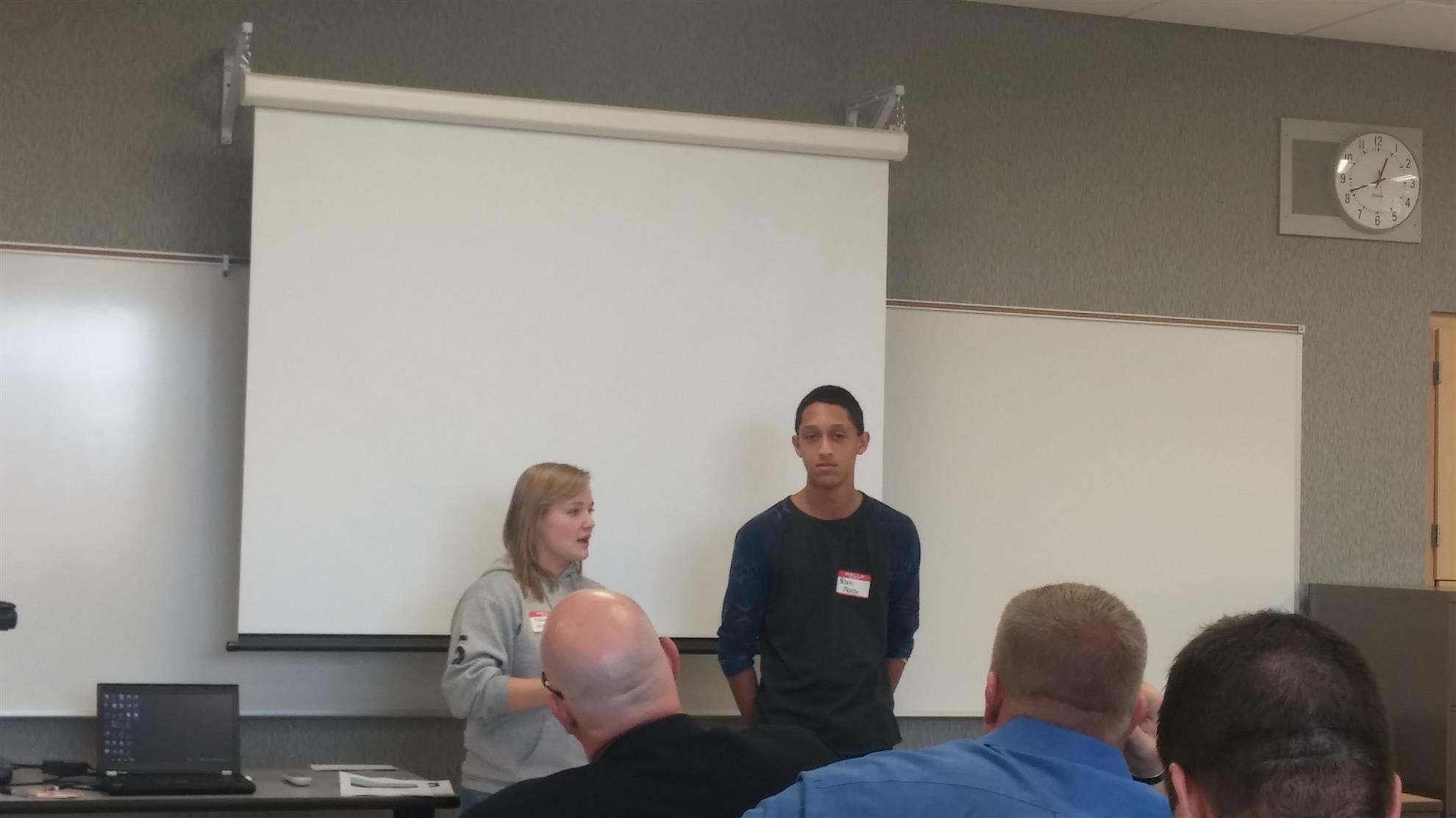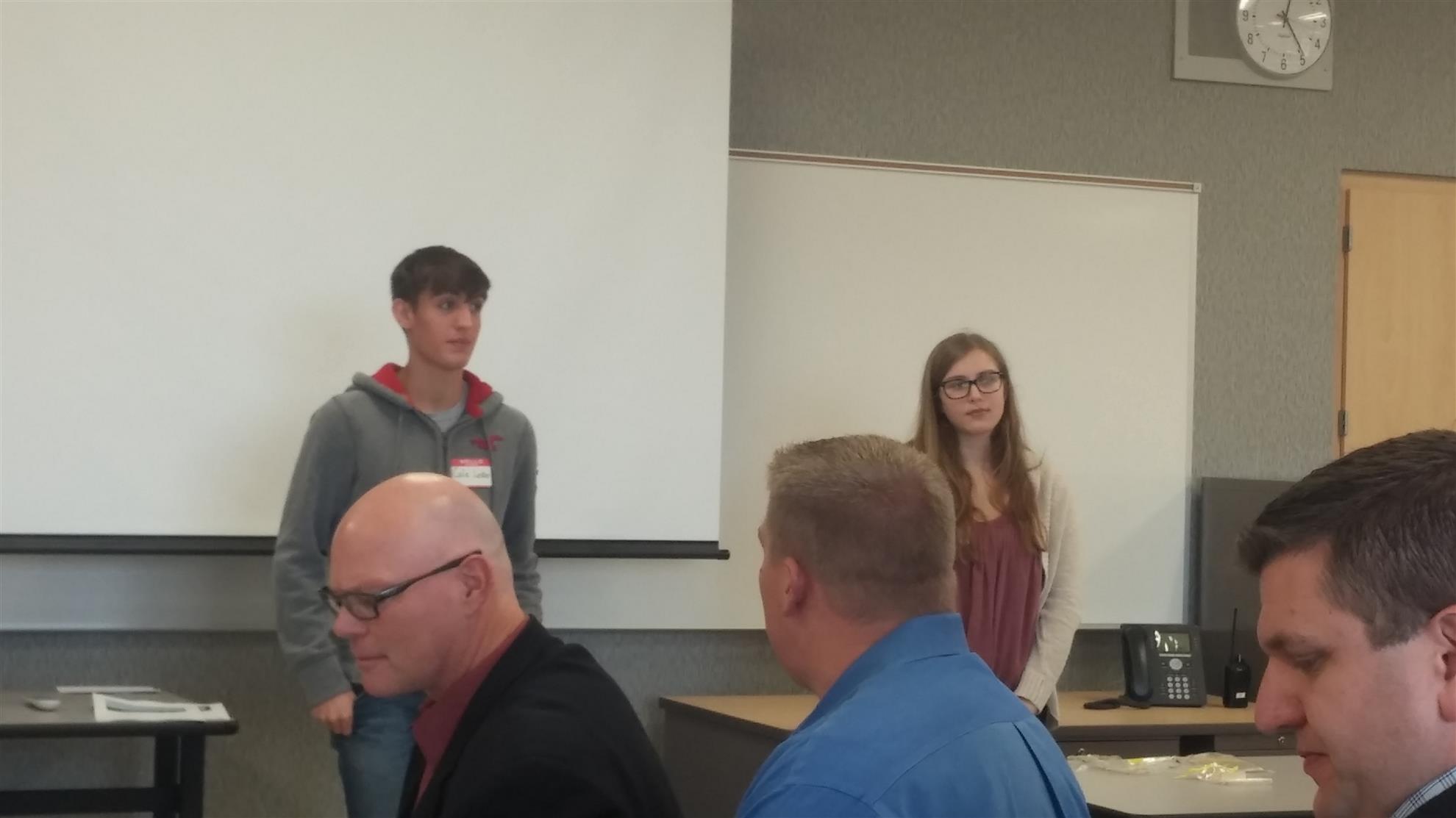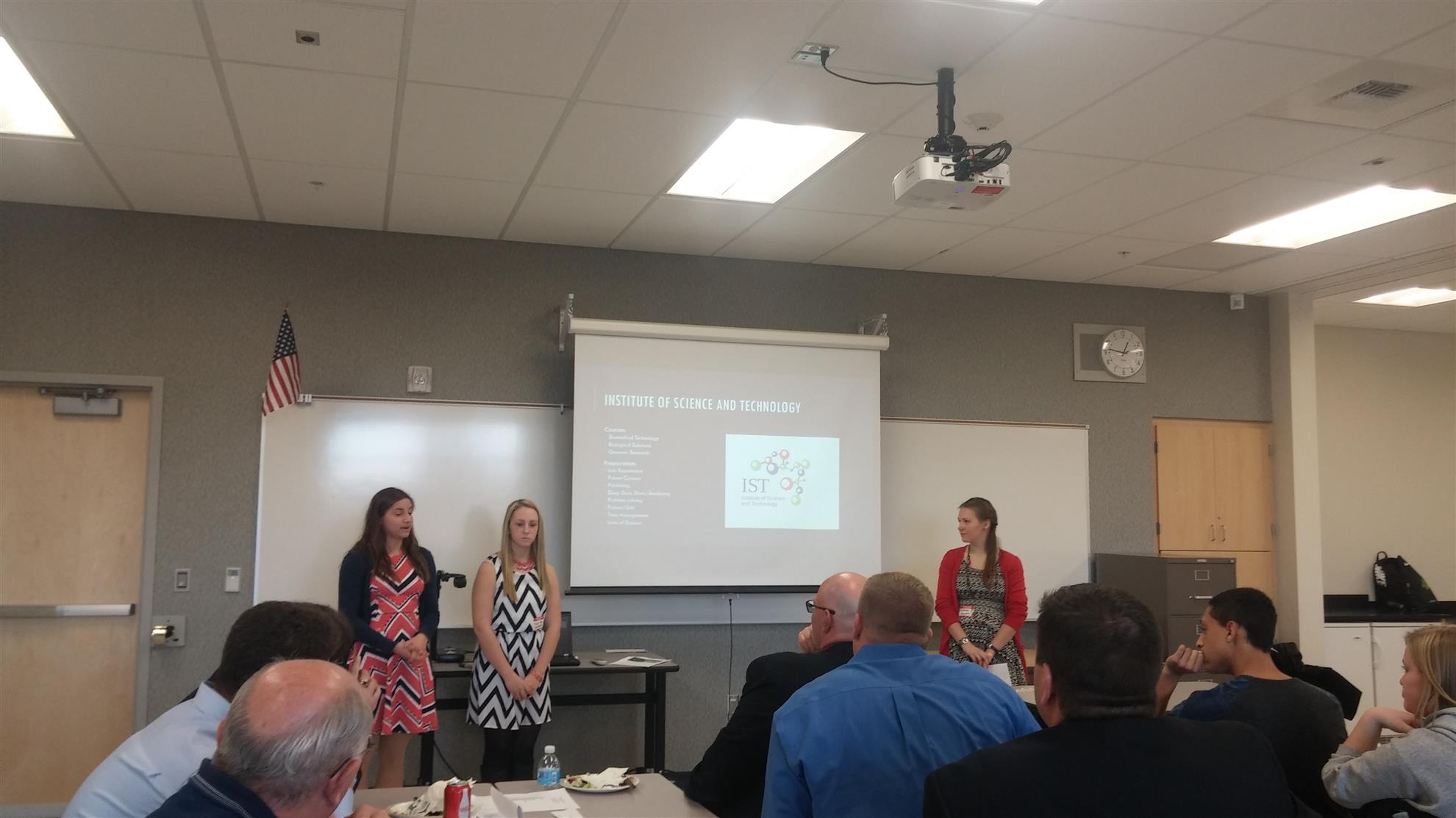New Science Building NCHS -- Steve Fisk and Students
Posted by Charles Rehberg
on Nov 17, 2014
Spokane North Notes
A weekly bulletin of the Spokane-North Rotary Club
November 17, 2014
Editors: Chuck Rehberg and Sandy Fink
Photos: Eric Johnson
Program Coordinator: Jim Minkler
The Holiday Luncheon will be held on Dec. 15 at the Lincoln Center. Lenore Romney reminds us that the choir from Holmes will join us for lunch and entertain us withe a few selections.
NC scores big with new science building
It only takes one Rotary luncheon –and one word -- to see why science education at North Central High School has become about as special to Spokane as basketball at Gonzaga University.
 The lunch was Nov. 17 and the key word, as club members learned and experienced, is “passion.” With a capital “P.”
The lunch was Nov. 17 and the key word, as club members learned and experienced, is “passion.” With a capital “P.” Three teenage girls have to be passionate to arrive before regular classes, give up lunch hours, and stay late after school to study the genomics of seal scat to determine the effects on seven species of salmon and gray whales. They shared their research with club members at a luncheon also attended by four top District 81 staffers.
The impressive session was held in NC’s new science digs, as important to that program as sold-out McCarthey Court is to GU hoops.
The $16 million NC Institute of Science, which opened in September, was the vision of legendary science teacher Randy James and Principal Steve Fisk. James has taught science at NC for 30 years, much of that tenure while club member Sandy Fink was principal.
taught science at NC for 30 years, much of that tenure while club member Sandy Fink was principal.
 taught science at NC for 30 years, much of that tenure while club member Sandy Fink was principal.
taught science at NC for 30 years, much of that tenure while club member Sandy Fink was principal. At least twice, James has brought three or four students to our club luncheons to discuss their college-level inquiries into the DNA of bison and butterflies, among other topics.
Fisk said this “state-of-the-art molecular lab is very rare, especially west of the Mississippi.”
The three-story, 40,000 square foot science building has six biology labs plus the amazing third-floor lab for advanced courses in biomedical technology, biologic solutions and genomic research. The latter includes a “second-generation DNA sequencer,” which can evaluate millions of pieces of DNA. Pretty impressive for Spokane’s smallest public high school.
One recent visitor who was Washington Gov. Jay Inslee, who said: “The ambition of this school is most impressive.”
Also impressive is the outreach, using the labs to introduce high-level science to all 6th graders in Spokane. The program will be expanded to include 7th graders next year, Fisk said.
The Rotary luncheon showed that the passion is contagious to non-science programs.
Drama club students Naomi Hippauf and Noah Marsh talked about their roles in “True Colors,” which turned 45 very personal poems and essays into a “gritty, mirror to life” production . Topics include witnessing a suicide, depression and emotional abuse, plus some lighter themes about skateboarding and finding a boyfriend.
. Topics include witnessing a suicide, depression and emotional abuse, plus some lighter themes about skateboarding and finding a boyfriend.
 . Topics include witnessing a suicide, depression and emotional abuse, plus some lighter themes about skateboarding and finding a boyfriend.
. Topics include witnessing a suicide, depression and emotional abuse, plus some lighter themes about skateboarding and finding a boyfriend. Marsh, a sophomore, said before he got involved he thought “the drama club was full of nerds, people not like me.” But with this project, he said, “I could relate to them,” including “the boy who saw a dead woman in his yard and saw a man shoot himself.”
Hippauf said the production “made me realize how big a thing this is, and what people really go through on a day-to-day basis.”
Two diverse speakers came from the Advanced Placement Capstone course.

Cale Lester talked about his research on the economics of having nuclear power replace fossil fuels for base power. He studies balancing the high costs of building enough nuclear plants against the mounting costs of dealing with global warming and other environmental issues stemming from growing use of fossil fuels.
On a far different topic, Alexandra Nepean talked of her research on “body image issues and role models for young girls,” including “how relations are portrayed, and how someone falls in love in three days.”

The three students from the IST lab, juniors Christina Negretti, Kristen Wanki and Taylor Charbonneau discussed their research on gray whales, sea lions and seven salmon species. They are studying DNA samples to show the effects of a whale population which totaled 30,000 in the 1850s, dropped to 1,900 by the early 1900s with unregulated whaling and has since rebounded to 24,000. They hope to publish their findings in regional and national journals.
Asked how the girls got interested in science, their answers were almost as interesting as their research.
“My brother went through this course and now he is on the fast track to a PhD. at WSU,” Negretti said, adding, “he said do it.”
“I needed an elective,” said Charbonneau. “I like it now.”
“I did not like science,” said Wanki. “But my sister took the class with Mr. James and she said ‘take it, you’ll like it.’”
Wanki said, “Creating a love for science…Mr. James and others, you can see their passion. And, it prepares you for other things in life, too.”
So the trickle-down effect is evident, from older siblings and from high school to middle schools and elementary schools, as North Central puts a bold capital “S” – for science – in District 81’s STEM (Science, Technology, Engineering and Math) education.
The track record is building at NC, where all 24 students aced the national exam in the AP Cambridge program, which develops independent research and teamwork skills. And Fisk proudly said in the last four years 86 graduates of the science program are in college and their average GPA is 3.65.
The new science lab – which really should be named for Randy James -- is surrounded by windows, and offers stunning views of Mount Spokane among the vistas. From this new vantage point, the lab students, faculty, administrators and the public can almost see the future.
